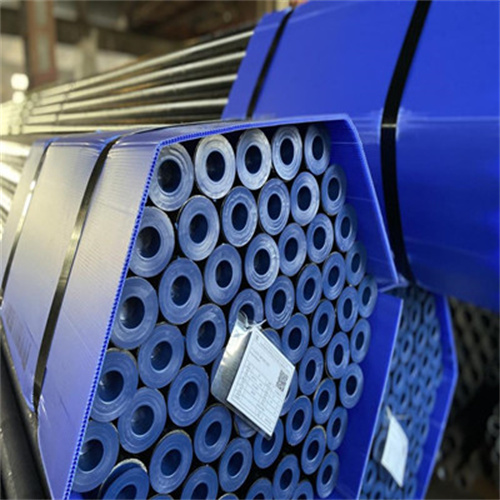Table of Contents
أنابيب التغليف مقابل أنابيب الحفر: فهم الاختلافات الرئيسية
من ناحية أخرى، يتم استخدام أنبوب الحفر لنقل سائل الحفر وعزم الدوران من جهاز الحفر إلى لقمة الحفر الموجودة في أسفل الحفرة. كما أنها مصنوعة من الفولاذ ومصممة لتحمل مستويات عالية من الضغط وعزم الدوران أثناء عملية الحفر. يتم توصيل أنبوب الحفر بجهاز الحفر على السطح ويمتد لأسفل إلى حفرة البئر، مما يسمح بتدوير لقمة الحفر وتقدمها.
أحد الاختلافات الرئيسية بين أنبوب التغليف وأنبوب الحفر هو وظائف كل منهما في عملية الحفر . يتم استخدام أنبوب التغليف في المقام الأول لحماية حفرة البئر وتوفير الدعم الهيكلي، في حين يتم استخدام أنبوب الحفر لنقل الطاقة وسائل الحفر إلى لقمة الحفر. يعد هذا التمييز مهمًا لأن كل مكون يلعب دورًا حاسمًا في النجاح الشامل لعمليات الحفر.
هناك اختلاف مهم آخر بين أنبوب التغليف وأنبوب الحفر وهو تصميمهما وبنائهما. عادةً ما تكون أنابيب التغليف أكثر سمكًا وأثقل من أنابيب الحفر، حيث إنها تحتاج إلى تحمل وزن التكوينات الصخرية المغطاة وتوفير الدعم لحفرة البئر. من ناحية أخرى، تم تصميم أنبوب الحفر ليكون أكثر مرونة وخفيف الوزن للسماح بسهولة التعامل والحركة أثناء عمليات الحفر.
بالإضافة إلى وظائفها وتصميمها، تختلف أنابيب التغليف وأنبوب الحفر أيضًا من حيث توصيلاتها و خيوط. عادةً ما يتم توصيل أنبوب التغليف باستخدام وصلات ملولبة مصممة لتوفير إحكام محكم ومنع التسربات، بينما يتم توصيل أنبوب الحفر باستخدام وصلة أداة تسمح بالتجميع والتفكيك بسرعة وسهولة.
على الرغم من هذه الاختلافات، فإن أنبوب التغليف وأنبوب الحفر كلاهما مكونان أساسيان في عملية الحفر ويعملان معًا لضمان نجاح عمليات الحفر. من خلال فهم الاختلافات الرئيسية بين الاثنين، يمكن لمشغلي الحفر اتخاذ قرارات مستنيرة بشأن اختيار واستخدام أنابيب التغليف وأنبوب الحفر في مشاريع الحفر الخاصة بهم.
في الختام، في حين أن أنابيب التغليف وأنبوب الحفر قد تبدو متشابهة للوهلة الأولى، إلا أنها تخدم أغراضًا مميزة في عملية الحفر ولها اختلافات رئيسية من حيث وظائفها وتصميمها واتصالاتها. ومن خلال فهم هذه الاختلافات، يمكن لمشغلي الحفر ضمان نجاح عمليات الحفر الخاصة بهم وزيادة كفاءة وفعالية مشاريع الحفر الخاصة بهم.


Casing pipe is used to line the walls of a drilled well to prevent the hole from collapsing and to isolate different geological formations. It is typically made of steel and comes in various sizes and grades to accommodate different drilling conditions. Casing pipe is installed as the well is being drilled, with each section of pipe being connected and lowered into the hole as the drilling progresses.
Drill pipe, on the other hand, is used to transmit drilling fluid and torque from the drilling rig to the drill bit at the bottom of the hole. It is also made of steel and is designed to withstand high Levels of stress and torque during the drilling process. Drill pipe is connected to the drilling rig at the surface and extends Down into the wellbore, allowing for the rotation and advancement of the drill bit.
One of the key differences between casing pipe and drill pipe is their respective functions in the drilling process. Casing pipe is primarily used to protect the wellbore and provide structural support, while drill pipe is used to transmit power and drilling fluid to the drill bit. This distinction is important because each component plays a crucial role in the overall success of drilling operations.
Another important difference between casing pipe and drill pipe is their design and construction. Casing pipe is typically thicker and heavier than drill pipe, as it needs to withstand the weight of the overlying rock formations and provide support for the wellbore. Drill pipe, on the other hand, is designed to be more flexible and lightweight to allow for easy handling and movement during drilling operations.
In addition to their functions and design, casing pipe and drill pipe also differ in terms of their connections and threading. Casing pipe is typically connected using threaded connections that are designed to provide a tight seal and prevent leaks, while drill pipe is connected using a tool joint that allows for quick and easy assembly and disassembly.
Despite these differences, casing pipe and drill pipe are both essential components in the drilling process and work together to ensure the success of drilling operations. By understanding the key differences between the two, drilling operators can make informed decisions about the selection and use of casing pipe and drill pipe in their drilling projects.
In conclusion, while casing pipe and drill pipe may appear similar at first glance, they serve distinct purposes in the drilling process and have key differences in terms of their functions, design, and connections. By understanding these differences, drilling operators can ensure the success of their drilling operations and maximize the efficiency and effectiveness of their drilling projects.
